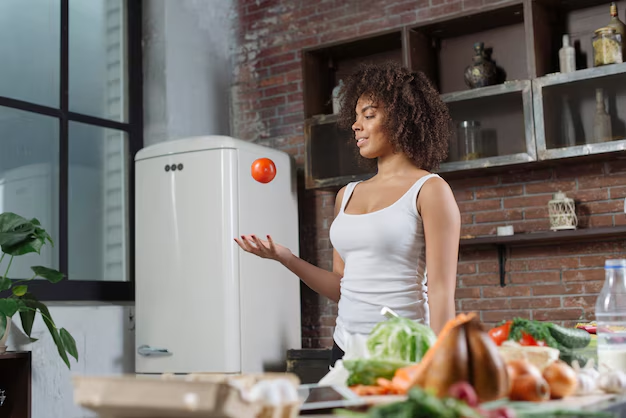Is Your Refrigerator Cold Enough? A Complete Guide to Checking and Setting Temperatures
In today's fast-paced world, managing the household efficiently often starts with smart kitchen practices. One key aspect is ensuring your refrigerator is running at the optimal temperature. Are you certain your fridge is maintaining the right chill to keep your food fresh and safe? Let's dive into everything you need to know about checking and setting the temperature of your refrigerator.
🥶 Why Refrigerator Temperature Matters
The importance of maintaining the correct refrigerator temperature cannot be overstated. It plays a vital role in preserving the quality and safety of your food.
The Hidden Risks of Incorrect Temperatures
When a refrigerator is not cold enough, perishable items can spoil more quickly, leading to foodborne illnesses. Conversely, a temperature that's too low wastes energy and can result in frozen produce. Thus, ensuring your refrigerator operates at the correct temperature optimizes food preservation and reduces the risk of spoilage.
The Ideal Fridge Temperature
Expert consensus generally supports a temperature of 37 to 40 degrees Fahrenheit (2.8 to 4.4 degrees Celsius) for the refrigerator section. This range helps slow bacterial growth while maintaining food quality.
🛠 How To Accurately Check Your Refrigerator's Temperature
Measuring your refrigerator's temperature isn't as straightforward as glancing at a built-in thermometer. Here's a step-by-step guide to ensure accurate readings and optimal performance.
Step 1: Preparation Essentials
Before you begin, gather a few items:
- A refrigerator thermometer: This tool offers precise readings and is essential for accuracy.
- A glass of water: Used to stabilize thermometer readings when placed inside the fridge.
Step 2: Placing the Thermometer
- Locate a spot: The best place is often the middle shelf, away from the fridge walls.
- Use the water: Place the thermometer inside a glass of water for the most reliable results. This method averages temperature changes over time, offering stability in readings.
Step 3: Taking the Reading
- Wait it out: Allow 24 hours for an accurate reading. Frequent opening of the fridge can alter temperatures.
- Review results: Make necessary adjustments if the temperature is outside the 37-40°F range.
🔄 Adjusting Your Refrigerator’s Settings
Once you have a clear reading, it's time to adjust if necessary. Here's how you can ensure your settings are just right.
Manual Dial Adjustments
For refrigerators with manual dials:
- Incremental changes: Adjust the dial slightly — half a level at a time.
- Reassess: Use your thermometer to recheck temperature after 24 hours.
Digital Control Panels
Modern fridges often come with digital panels:
- Direct adjustments: Read the display and press the designated up or down arrows to set a new temperature.
- Re-confirm accuracy: It’s good practice to verify settings against an independent thermometer.
📝 Maintaining Optimal Refrigerator Performance
Ensuring your refrigerator serves you well into the future involves regular maintenance and smart practices.
Simple Maintenance Tips
- Organize properly: Avoid overloading, which can strain the cooling systems.
- Clean regularly: Dust coils and keep the seals clean for energy efficiency.
- Check door seals: A tight seal keeps cold air in. Test by closing the door over a piece of paper — if it pulls out easily, consider replacing the seal.
Energy Conservation Considerations
Keeping your refrigerator energy-efficient benefits both your wallet and the environment.
- Right placement: Place the fridge in a spot that's away from heat sources like ovens and direct sunlight.
- Frequent defrosting: For non-frost-free models, regular defrosting ensures efficiency.
🖼️ Quick Temperature Management Checks
Here's a convenient summary to keep your refrigerator in check for peak performance:
- 🌡️ Ideal temperature: Aim for 37-40°F (2.8-4.4°C)
- 📏 Place thermometer: Middle shelf, ideally in a glass of water
- ⏳ Allow 24-hour calibration: Before making adjustments
- 🔧 Regular dial or digital adjustments: As needed
- 🧽 Keep clean: Maintain seals and coils
- 🏠 Smart positioning: Away from heat sources
Filling the Knowledge Gaps
While many homeowners understand the basics of refrigerator maintenance, recognizing the nuances of fridge temperatures can enrich overall appliance care. Let's explore additional layers of knowledge that can amplify your kitchen expertise.
Understanding Temperature Zones Inside the Fridge
Did you know that various parts of your refrigerator are cooler than others? Cold zones are where perishable items like dairy, eggs, and meats should dwell. Meanwhile, the door area has fluctuating temperatures and is best for condiments.
Freezer Temperature: The Other Half of the Equation
While this guide focuses primarily on the refrigerator, ensuring that the freezer operates optimally is equally crucial. The recommended setting is 0°F (-18°C), which keeps frozen items safe from spoilage.
Investing in Quality Thermometers
A simple yet impactful choice is investing in a reliable thermometer. While digital models are convenient, analog types often offer robust durability. Ensure that the thermometer is easy to read and calibrate.
Staying Informed on Technological Advances
In recent years, the smart appliance boom has introduced refrigerators that come with built-in temperature sensors and apps, allowing for seamless monitoring and adjustment. For the tech-savvy, these innovations offer both convenience and precision.
Wrapping Up: A Chill Approach to Food Safety
Understanding and managing your refrigerator's temperature is more than a mundane task — it's a vital part of safe food storage and energy conservation. Adopting practical steps ensures your appliance serves its purpose effectively, keeping your food fresh and your household running smoothly. By integrating the practices outlined, you empower yourself to make informed decisions that optimize kitchen efficiency. Remember, a well-maintained fridge supports both food safety and energy-saving goals, making your everyday life a little cooler. 🥶
